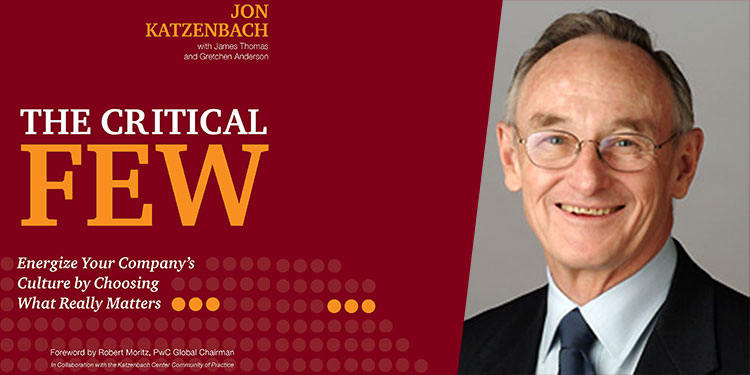Focus On Three Key Elements To Transform Your Company Culture

If you work in any large or well-established organization, you already know how seemingly impassable an entrenched, repeating set of behaviors can become. In a recent survey of executives, 25% reported that a culture effort initiated at their organization had yielded no visible results. It takes persistence and attention to shift any habits, be they personal habits, like smoking and overeating, or organizational habits. People don’t change their habits quickly or easily — even when they have excellent reasons to do so. But habits can indeed be changed, and cultures can and do evolve. And this can be guided by you.
You may be a CEO, another member of the C-suite, a middle manager, or a frontline worker. Whatever role you hold in your company, you have the power to evolve its culture. You don’t have to accept the culture as it is. You can accentuate the best of it, and use it to help your organization overcome those patterns that hamper progress or prevent your goals from being achieved. The effort takes selective and targeted alignment, rather than dramatic repeal and replacement. It’s simpler than you might think — and the simpler it is, the more effective.
Identify The Three Critical Elements
There are basic cultural elements that motivate your workforce. They’re broad enough to resonate across the whole organization, but focused and simple enough to encourage real actions in people’s daily lives. They also tap into the emotions that bring a culture to life. Once you identify these elements, you can cultivate them and align them with your goals. These are the three critical elements:
- Traits: A set of shared characteristics that represent the “family resemblance” of your entire enterprise— the qualities that transcend subcultures, and are at the heart of the shared assumptions people bring to work, and their emotional connection to what they do.
- Keystone behaviors: A few carefully identified things that some people do, day after day, that would lead your company to succeed if they were replicated at greater scale.
- Authentic informal leaders (AILs): A few people, or at least a reasonably small percentage of your company’s people, who have a high degree of “emotional intuition” or social connectedness stand out.
Take a Simple, Focused Approach
By sharply focusing on these three elements, you can reduce complexity and have a positive, informal, and lasting cultural impact on performance. Most importantly, this approach takes the emotional dimension of human behavior into account, and exploits the power of simplicity. It amplifies community connections by encouraging the workforce to look to peers and colleagues for insight, support, and encouragement. When people you trust and admire model and enable a few key behaviors and help others do the same (and feel good about it!), those behaviors spread quickly, and they stick.
A focused approach like this may feel counterintuitive. Most other methodologies meet complexity with comprehensive thoroughness: initiatives, ideas, frameworks, and change plans, all based on the idea that a culture can be forcibly pushed toward some set of external standards. But we have yet to meet the leader who can explain how a very comprehensive approach changed the way things really worked.
Complexity is distracting; comprehensiveness is wasted energy. You need crystal-clear simplicity and a small number of elements that will carry everyone forward together. You don’t need a lot of targets to hit or results to generate. You need to unify your organization’s people around a common, clear cultural movement, driven by a core of keystone behaviors and positive emotions.
Act with Clarity and Discipline
Simplicity requires discipline. As a leader looking for ways to help those in your sphere of influence align with the company strategy, you must make many difficult choices. You need to focus on resonant traits, compelling behaviors, influential “authentic informal leaders.”
To recognize how hard this is, consider what would happen if you had to pick, right now, the three keystone actions your company should take immediately to build a better culture. We’re sure you can easily name twelve, but boiling them down to three or four is going to be much harder. Often, you’ll have a good reason to include every one of the dozen you picked.
But if you can’t narrow down the list, you’ll be overwhelmed when you start to work with them — and so will everyone else in the organization. Moreover, it will be very difficult to measure any change. You won’t even know which new behaviors have catalyzed new results. If you want to be effective at change or boosting performance, you can’t encompass multitudes. You need to focus your attention on the critical few.
It’s likely that the single act you will best be remembered for in the course of your career is the way in which you managed to impact a cultural situation — whether you are a leader close to the front lines or a CEO. If you identify and deploy those critical few elements within the cultural situation in your work environment, you will create clarity and meaning for others. People around you will be more likely to make an emotional, not just a rational, commitment to change. They will trust and respect your choice of direction, and they will look for ways to follow it. You will elicit enthusiasm and creativity, and build the kind of powerful company that people recognize for its innate value, and its effectiveness.
Have you read?
# Top 500 Best Universities In The World For 2019: Medicine And Health Science Degrees. | Life Science Degrees. | Physical Science Degrees. | Psychology Degrees. | Arts and Humanities Degree. | Education Degrees. | Social Sciences Degrees. | Business And Economics Degrees. | Computer Science Degrees. | Engineering And Technology Degrees.
Bring the best of the CEOWORLD magazine's global journalism to audiences in the United States and around the world. - Add CEOWORLD magazine to your Google News feed.
Follow CEOWORLD magazine headlines on: Google News, LinkedIn, Twitter, and Facebook.
Copyright 2025 The CEOWORLD magazine. All rights reserved. This material (and any extract from it) must not be copied, redistributed or placed on any website, without CEOWORLD magazine' prior written consent. For media queries, please contact: info@ceoworld.biz









